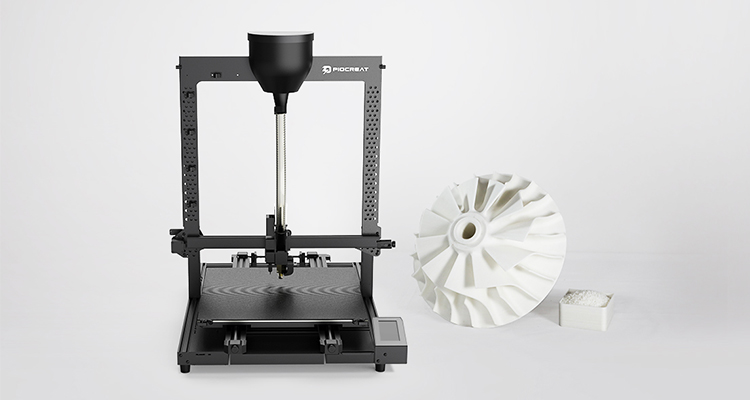The Production Process of 3D Printing Filaments Using Plastic Extrusion Machines
With the rapid development of 3D printing technology in recent years, there has been a surging demand for high-quality 3D printing filaments. The most commonly used materials for fused deposition modeling (FDM) 3D printers are thermoplastics like ABS and PLA. Producing premium plastic filaments requires advanced plastic extrusion techniques and stringent quality control. This article will analyze the complete manufacturing process of 3D printer filaments step-by-step from a professional perspective.

Raw Material Selection and Preparation
The foundation of creating excellent 3D printer filaments is choosing the right raw materials. ABS and PLA are the dominant plastics for 3D printing filaments. ABS (Acrylonitrile Butadiene Styrene) features high strength, durability and thermal resistance, making it ideal for prototypes and mechanical parts. PLA (Polylactic Acid) is derived from renewable sources like corn starch and offers good dimensional stability. It's more commonly used for arts and crafts applications.
The polymer resins must be dried properly before processing to remove any moisture which may cause bubbles and defects. Drying is performed using specialized equipment like desiccant dryers or oven dryers at temperatures of 80-100°C for 2-4 hours. The resin is then premixed with small percentages of additives like colorants, plasticizers or impact modifiers to achieve the desired material properties. Proper premixing ensures the additives are evenly dispersed throughout the material.
Extrusion Process
The premixed resin compound is fed into the extruder hopper and conveyed forward by the rotating screw inside the extruder barrel. The screw has a helical flighting design which mixes the material thoroughly and pushes it towards the die section. As the material moves forward, friction and external heating melts the plastic into a homogeneous melt.
The extruder barrel is divided into multiple temperature zones and the temperatures are closely controlled to melt the material completely without overheating. The molten plastic accumulates in the metering section and is pumped through the die under pressure. The die has a small circular opening that shapes the melt into a thin continuous filament with precise diameter.
Dimensional Calibration and Cooling
On exiting the die, the extruded filament still maintains the high temperature and needs careful cooling. The strand is led through a multi-stage cooling trough where fans or water cooling controls the cooling rate. The key is to cool it just right - too fast cooling may induce stresses while too slow cooling causes filament sagging.
The cooled filament then passes through electronic diameter laser gauges which automatically monitor and adjust the line speed to achieve the target diameter. Diameter consistency is critical for 3D printing quality. The filament is finally wound onto spools by an automated winder.
Filament Characteristics and Testing
High-quality 3D printing filaments exhibit excellent roundness, surface finish and dimensional uniformity. The diameter tolerance is generally around ±0.05mm. The coloration should be uniform without color streaking or inconsistencies. The filament surface needs to be smooth without any sharkskin, melt fracture or excessive blooming.
Finished filaments undergo standardized tests for diameter, ovality, color consistency, tensile strength and surface finish. Thermal characterization is done using techniques like differential scanning calorimetry and thermogravimetric analysis. The test results validate the filament's suitability for 3D printing applications.
Quality Assurance and Packaging
Maintaining product quality requires quality assurance at every stage - raw materials inspection, process parameters optimization, defect detection and rectification. The manufacturing environment must have proper temperature, humidity and air filtration control.
The tested filament is wound onto spools in a clean room environment. Vacuum sealed aluminum foil bags prevent moisture ingress during storage and transport. The bags are labelled with details like material type, diameter, color, length and production batch.
Conclusion
In summary, producing 3D printing filaments involves comprehensive material science, process engineering and quality management. While the fundamental process utilizes extrusion, the complete manufacturing cycle requires thorough research and understanding of the materials, customized equipment design and stringent monitoring. With the right expertise and technology, manufacturers can consistently develop quality filaments to meet the expanding requirements of the 3D printing
 Get a quote
Get a quote